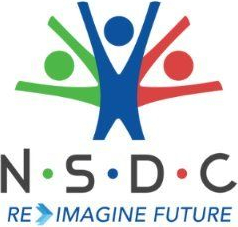Recipe Books to Creative Chefs: Software 3.0 Is Redefining the Future of Technology

Software development has evolved from strict rule-following to intelligent systems that learn and even create on their own. This shift, championed by Andrej Karpathy, is transforming not just how we build software—but also how we think about trust, ethics, and human oversight in a world where code can now write itself.
- A New Era of Creativity and Adaptation: Software 3.0 marks a leap from traditional, rule-based programming to AI-driven systems that learn, adapt, and even innovate—much like a master chef inventing new dishes for every guest.
- Promise Meets Peril: While this revolution democratizes development and unlocks unprecedented personalization, it also introduces risks: AI’s “black box” nature, hallucinations, and security vulnerabilities make transparency and accountability more challenging than ever.
- Human Oversight Remains Essential: As AI takes on a more autonomous role, strong ethical guardrails and vigilant human supervision are crucial to ensure fairness, reliability, and trust in the software that increasingly shapes our world.
The evolution of software development from writing code that explicitly defined every step a computer should take (Software 1.0); to instead of explicitly programming rules, where we provide data and algorithms that allow the system to learn those rules itself (Software 2.0); and now fast-forward to the current phase where AI dynamically shapes applications based on data and user interaction (Software 3.0) is revolutionizing the world. In many ways while this has democratized software development it also demands a huge change in mindset, strong ethical guardrails, and the essential element of ensuring human oversight.
Simply put, Software 3. 0 is all about software that learns and adapts on its own from data. Think of it as going beyond traditional programming where you explicitly tell the software what to do. Instead, you feed it data. It figures out the ‘how’ itself using machine learning.
Andrej Karpathy, a prominent Slovak-Canadian computer scientist known for his work in deep learning and computer vision, was the first to introduce the concept of Software 2.0 and the current evolution to 3.0. Andrej Karpathy offers a compelling framework for how this evolution can be conceptualized in three distinct stages: Software 1.0, Software 2.0, and the nascent Software 3.0. This progression marks a fundamental shift from programming with explicit instructions to programming by specifying desired outcomes, a trajectory that is redefining what it means to create and what it means to be a developer.
Nevertheless, this progression is not without inherent risks specially its . Black Box nature: Understanding how and why a neural network reaches a specific output can be difficult. This lack of transparency complicates explaining results or diagnosing errors. The increasing autonomy of AI systems raises ethical concerns. Ensuring responsible and ethical AI use is critical, particularly regarding bias, fairness, transparency, and accountability.
Imagine building a customer service system like running a restaurant. Software 1.0 is your kitchen’s foundation—the ovens, the plumbing, the recipes written down step by step. It’s all about precision and reliability: when someone orders a pizza, it must be made exactly the same way every time. Software 2.0 is like hiring a chef who’s learned from years of experience. They don’t need a recipe for everything—they recognize patterns, understand customer preferences, and can adapt the menu based on what people like. This is the machine learning layer: it listens, learns, and understands. Then comes Software 3.0, the creative head chef who not only cooks but invents new dishes on the fly, personalizes meals for each guest, and even teaches the kitchen staff how to improve. This is generative AI—it doesn’t just follow or learn rules, it creates new ones, adapts in real time, and even improves itself.
These three layers—rule-following, learning, and creating—work together to deliver fast, smart, and personalized service. But this powerful model also comes with risks. As we climb the ladder from 1.0 to 3.0, we gain speed and flexibility but lose some control and clarity. The more the system learns and creates on its own, the harder it becomes to understand how it works or why it made a certain decision. It’s like having a chef who invents amazing dishes but won’t tell you what’s in them. This can lead to problems with trust, fairness, and accountability. So while this new era of “software eating software” unlocks incredible potential, it also demands careful oversight—because the tools we build are now building themselves.
While Software 3.0 holds immense promise, Karpathy also addressed its hurdles:
LLM Errors and Hallucinations: LLMs can produce flawed outputs, such as fabricated facts or illogical code, due to their “jagged intelligence.” They excel in some areas but falter in others, like basic arithmetic or consistent spelling, requiring careful validation.
Lack of Persistent Memory: LLMs suffer from “anterograde amnesia,” meaning they don’t retain context or learn from past interactions over time. This limits their ability to develop expertise, though tools like ChatGPT are beginning to address this with memory features.
Security and Reliability Risks: Prompt injections and other vulnerabilities pose threats to AI-generated software. Karpathy stressed the need to “keep AI on a leash,” emphasizing human supervision to ensure safety and correctness.


